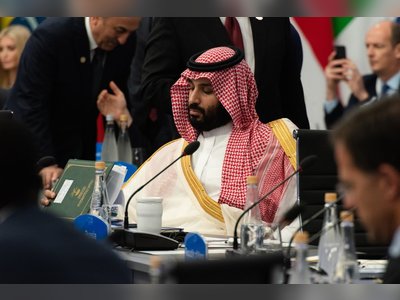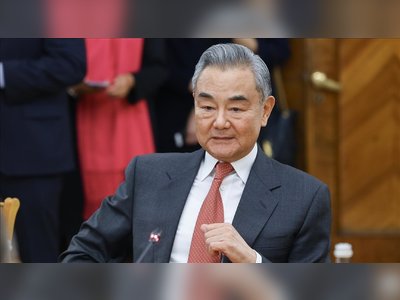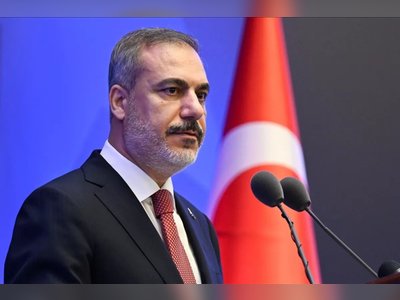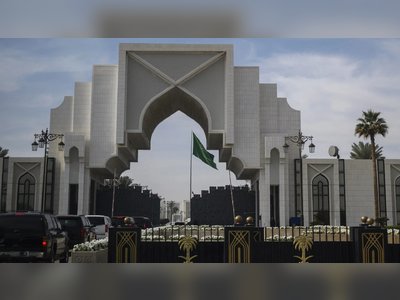
A Complex Path to Peace: The Israel-Hamas Ceasefire and Hostage Deal in Gaza
The intricate and often strained negotiations over the past 15 months culminate in a tentative ceasefire agreement between Israel and Hamas, with numerous hurdles yet to be resolved.
After more than 15 months of intense conflict, a ceasefire agreement between Israel and Hamas has been reached, subject to a final ratification by the Israeli cabinet.
The understanding, mediated by the United States and Qatar, aims to halt fighting in the Gaza Strip and facilitate the exchange of hostages and prisoners.
The conflict, which began on October 7, 2023, when Hamas militants launched a surprise attack on Israel, has resulted in the deaths of approximately 1,200 Israelis and the capture of over 250 hostages.
In retaliation, Israel conducted a comprehensive military campaign, which included airstrikes and a ground invasion of Gaza, leading to a devastation that left over 46,700 Palestinians dead, predominantly civilians, according to Gaza's health ministry.
The ceasefire agreement has been painstakingly negotiated, seeing multiple milestones over the last year and a half.
Initial efforts included a short-lived ceasefire in November 2023, aided by the United States, Qatar, and Egypt, which involved the exchange of hostages for Palestinian prisoners.
Following the collapse of that ceasefire, diplomatic movements continued with no viable result until recent high-level involvement from outgoing U.S. President Joe Biden and incoming President Donald Trump's administration.
The current agreement outlines a phased implementation, beginning with the release of 33 hostages, which include a mix of civilians and military personnel held by Hamas, and the corresponding release of Palestinian prisoners held in Israeli jails.
Despite the announcement of the deal, violence persisted, with recent Israeli airstrikes killing 81 Palestinians, exacerbating the already dire humanitarian conditions in Gaza.
Key issues have surfaced, threatening the agreement.
Among them is the controversial list of Palestinian prisoners proposed for exchange, veto power on certain releases by Israel, and the specific timetable for Israeli military withdrawal from designated areas.
These challenges have delayed the anticipated vote within the Israeli cabinet, inflaming domestic political tensions with significant opposition from Israel’s far-right parties.
Globally, the deal is seen as an opportunity, albeit a tentative one, to end a conflict that has posed serious challenges to regional stability and international diplomacy.
Stakeholders have expressed both skepticism and hope, noting the intricate layers of trust and conditions embedded in this agreement.
The true test will come in the execution of these terms and whether the fragile truce can transition into a lasting peace.
With many displaced Gazans waiting to return home amid continued hostilities, and international communities on edge, the coming days will be pivotal.
All eyes remain on Israel and Hamas—as well as the American, Qatari, and Egyptian mediators—to see if this ceasefire can withstand its early tests and evolve into a durable solution.
The understanding, mediated by the United States and Qatar, aims to halt fighting in the Gaza Strip and facilitate the exchange of hostages and prisoners.
The conflict, which began on October 7, 2023, when Hamas militants launched a surprise attack on Israel, has resulted in the deaths of approximately 1,200 Israelis and the capture of over 250 hostages.
In retaliation, Israel conducted a comprehensive military campaign, which included airstrikes and a ground invasion of Gaza, leading to a devastation that left over 46,700 Palestinians dead, predominantly civilians, according to Gaza's health ministry.
The ceasefire agreement has been painstakingly negotiated, seeing multiple milestones over the last year and a half.
Initial efforts included a short-lived ceasefire in November 2023, aided by the United States, Qatar, and Egypt, which involved the exchange of hostages for Palestinian prisoners.
Following the collapse of that ceasefire, diplomatic movements continued with no viable result until recent high-level involvement from outgoing U.S. President Joe Biden and incoming President Donald Trump's administration.
The current agreement outlines a phased implementation, beginning with the release of 33 hostages, which include a mix of civilians and military personnel held by Hamas, and the corresponding release of Palestinian prisoners held in Israeli jails.
Despite the announcement of the deal, violence persisted, with recent Israeli airstrikes killing 81 Palestinians, exacerbating the already dire humanitarian conditions in Gaza.
Key issues have surfaced, threatening the agreement.
Among them is the controversial list of Palestinian prisoners proposed for exchange, veto power on certain releases by Israel, and the specific timetable for Israeli military withdrawal from designated areas.
These challenges have delayed the anticipated vote within the Israeli cabinet, inflaming domestic political tensions with significant opposition from Israel’s far-right parties.
Globally, the deal is seen as an opportunity, albeit a tentative one, to end a conflict that has posed serious challenges to regional stability and international diplomacy.
Stakeholders have expressed both skepticism and hope, noting the intricate layers of trust and conditions embedded in this agreement.
The true test will come in the execution of these terms and whether the fragile truce can transition into a lasting peace.
With many displaced Gazans waiting to return home amid continued hostilities, and international communities on edge, the coming days will be pivotal.
All eyes remain on Israel and Hamas—as well as the American, Qatari, and Egyptian mediators—to see if this ceasefire can withstand its early tests and evolve into a durable solution.











